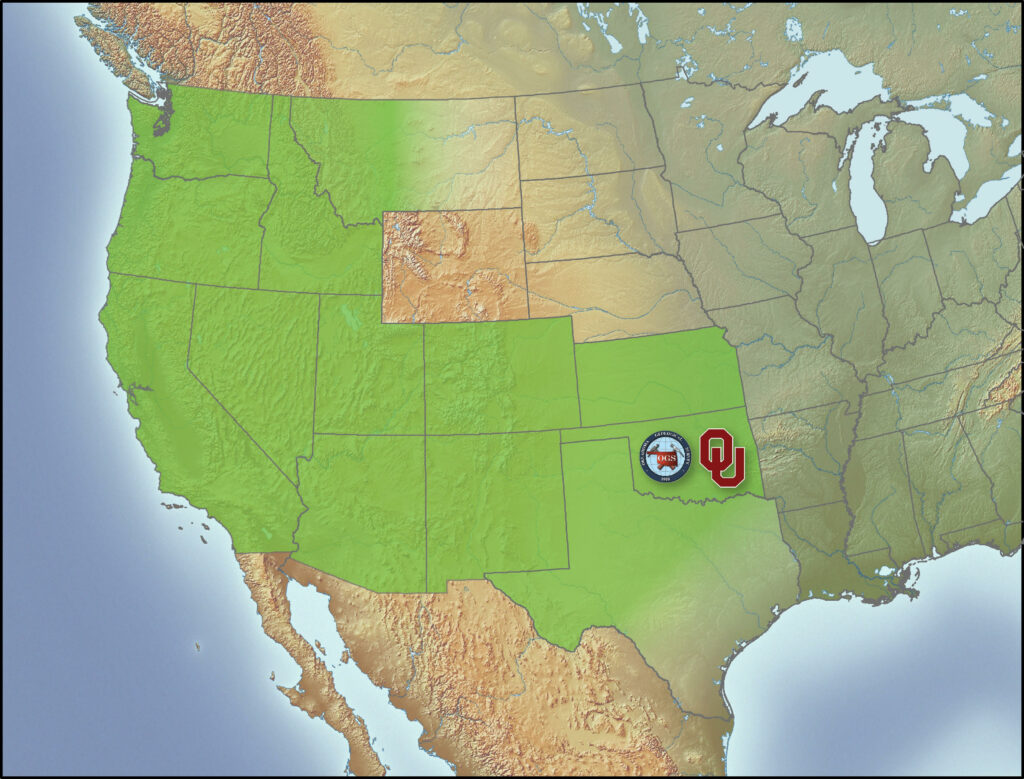Design of an Integrated CCS Operation in a Complex Geological Structure in Osage County, Oklahoma
CUSP Team
Project Lead: Rouzbeh Moghanloo (OU)
Industry Partner: Capture Point LLC
Primary Goal
Develop a two-step roadmap to help accelerate CCUS deployment in Oklahoma, focusing on designing and permitting a novel stacked storage CCUS complex
Impact on Carbon Storage
CCUS development in Oklahoma based on stacked storage
Project Duration
12 months



Project Description
In this CUSP focused project, the University of Oklahoma (UO) is collaborating with PNNL and Carbon Solutions LLC to design an integrated CCS operation in Osage County, Oklahoma. The main goal of the project is to develop a two-step roadmap to help accelerate CCUS deployment in Oklahoma, focusing on designing and permitting of a novel stacked storage CCUS complex. The focused project will support industry Capture Point LLC to develop a plan to submit a Class VI well permit application for a stacked storage CCUS complex in Osage County, Oklahoma.
The project will use the following process: (1) complete thorough evaluation of the Arbuckle Formation in the county, (2) determine the economic feasibility of a stacked storage site combining CO2-EOR and CO2 sequestration operations using the same surface facility unit , (3) develop a more detailed geological model based on knowledge and understanding of the Arbuckle saline formation, (4) develop the multi-pathway CCUS roadmap for Oklahoma focused on the stacked storage concept, (5) evaluate the environmental and social justice parameters in Osage county.
The project has already completed preliminary geological evaluation as well as techno-economic studies. After the initial evaluation of the storage formation was completed, UO used SimCCS’s Price mode to examine potential CCUS projects scenario. For the simulation, 1.6 MtCO2/yr was captured from eight sources, transported by pipeline and stored in the Arbuckle Formation. For a project duration of 20 years 32 MMTCO2 could be stored. To realize this scenario, about 579 km of pipeline is required and storage cost are estimated to be around $45/t CO2. For this simulation, there is net profit of ~$14.74/t CO2 sequestered
While storing carbon underground is of utmost importance, ensuring there are no seismicity risks is as important as well. The main goal is usually for CO2 to be stored over geologic time; hence, geomechanical risks such as the seismicity in the field or potential CO2 leakage through seals cannot be ignored and is considered as one of the requirements to determine success of the project. Quantifying the risks for geologic carbon sequestration – such as the risk of seismicity with a high degree of certainty is not just necessary for accuracy but is also a key safety, environmental, and economic concern. It is also one of the requirements to get class VI permits from the US (United States) Environmental Protection Agency. The increase of fluid injection in the Arbuckle Group and how it has increased seismicity risks was first demonstrated, and then utilizing the Bayesian approach, a statistical model where a random probability distribution is used to represent uncertainties within the model, including both input/output parameters to evaluate the seismicity risks was used to estimate these risks, and how it has increased seismicity risks was first demonstrated, and then utilizing the Bayesian approach, a statistical model where a random probability distribution is used to represent uncertainties within the model, including both input/output parameters to evaluate the seismicity risks was used to estimate these risks.

